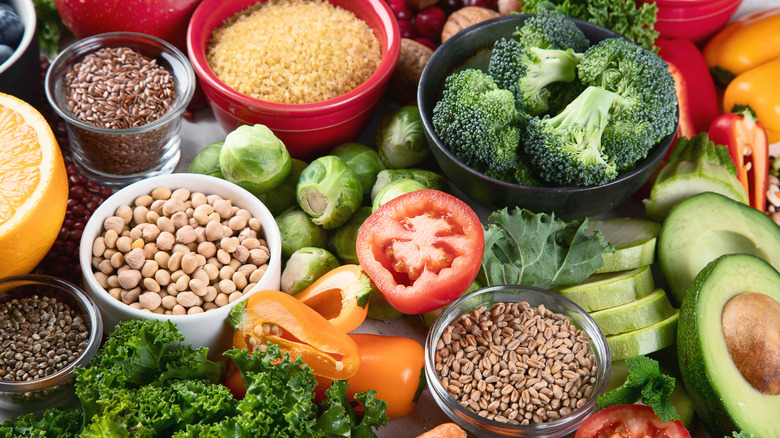Does Eating Fiber Help Control Breakouts?
When breakouts occur, the first goal is to identify what is causing the flare-up. Although acne typically results from pores getting clogged, the root of what is blocking them is the key to finding out what's causing the breakout. According to the American Academy of Dermatology Association, one of the most common causes of acne is hormones. Hormone surges can make oil glands in the skin bigger, which causes more oil to be produced. More oil production leads to more pores becoming clogged.
Besides oil, pores can also become clogged with bacteria that is typically present on the skin, as per the Cleveland Clinic. Dead skin cells found in hair follicles are another cause of acne. Proper hygiene and certain skincare products for hormonal acne can sometimes help alleviate breakouts.
However, treating acne from the inside out with what you eat is another option, and many people attempt to curb their acne through their diet.
What fiber can do for acne
Acne is an inflammatory skin condition, so one way to treat it is to reduce inflammation in the body. Systemic inflammation can be reduced by cutting out unhealthy foods and adding wholesome foods to your daily diet.
Fiber is one type of carbohydrate that is thought to help improve acne. Though researchers haven't identified the specific reason, one study showed an improvement in participants who ate 30 grams of high-fiber cereal, but researchers noted in another study that those results were inconclusive. According to WebMD, high-fiber diets help regulate blood sugar, which may result in reduced inflammation and in turn, less acne.
In addition, fiber is a food that can help in digestion and reduce constipation. For this reason, another theory of why fiber may help improve acne is that its natural ability to regulate bowel movements helps the body eliminate toxins, as per Healthline. Keeping your digestion running smoothly and regularly can help lower inflammation.
Ways to incorporate more fiber into your diet
Besides helping to improve acne, consuming a high-fiber diet also lessens the chances of diabetes, heart disease, and colon cancer (via Everyday Health). According to the U.S. Department of Agriculture, women are encouraged to consume at least 25 grams of fiber daily and men should aim for at least 38 grams. Adding more fiber to your daily diet doesn't have to be difficult. In fact, there are easy and tasty ways to do it, as per Verywell Fit.
For breakfast, instead of juicing your fruit, eat whole fruit and keep the skin on. A bowl of oatmeal with added berries packs a double-punch of fiber. For lunch, you can't go wrong with jam-packing a salad with high-fiber foods, such as beans, chickpeas, sliced almonds or walnuts, and quinoa. You can opt for a sandwich with high-fiber bread and a side of fruit salad. At dinnertime, a bowl of whole-grain pasta, brown rice, or a potato with the peel left on will provide a good supply of fiber. In addition, you can throw fresh veggies into a can of ready-made soup. Throughout the day, snack on nuts, seeds, and fresh veggies, which go great with your favorite dip.


